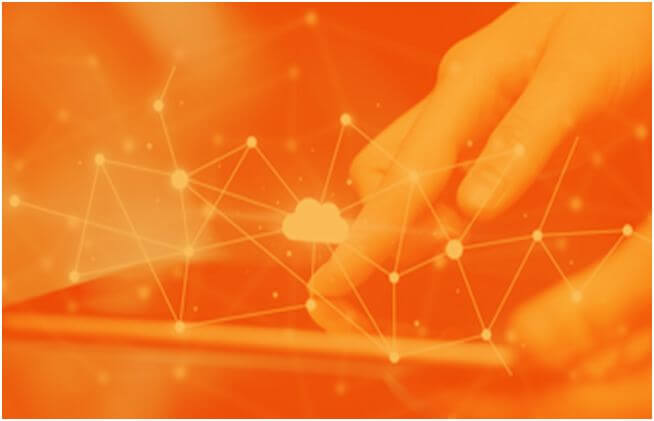An insight into data
Today’s businesses generate data from a variety of external sources like websites, social media, Internet of Things, instant messaging systems, and other third-party sources. It leads to a lot of data being present in varying formats and some like audio files, photos, unstructured data, and videos do not fit neatly into the usual traditional modern databases such as SAP HANA. This increases the need to have optimized data management systems and supporting tools in place that can extend and integrate into Big Data solutions.
This is where SAP comes in. SAP has provided data replication and transformation solutions that allow for the integration of both SAP and non-SAP business applications that can run both in-house and in the cloud.
The basics of SAP data replication
In the modern business environment, major corporations and large organizations run and analyze their operations on SAP systems. The exponential growth and rise of new and technologically advanced platforms have seen a dramatic increase in faster data processing, advanced data analytics, and real-time data warehousing. Progressive firms and businesses are now exploring avenues to make SAP data available to data lakes, data warehouses and other analytics platforms, both in-house and in the cloud.
SAP data replication tools help firms extract and consolidate data from their various SAP applications and components and deliver that data to the chosen platforms. This increases the value of the SAP data, determine the plan and approach to SAP analytics and respond quickly to new technologies and changing market conditions and trends.

Applying SAP data replication is often a challenging task as SAP systems have tens of thousands of tables, each with complex relationships and proprietary data formats that make the data inaccessible beyond SAP applications. However, with the right SAP data replication solution, it is possible to efficiently select, copy, and move SAP data wherever needed.
Tools for SAP data replication
There are several tools for SAP data replication and the most common ones will be analyzed in some detail here. Each has its strengths and uses. Even the best of technologies can fail through misuse or erroneous configuration leading to functional issues with data consistency and user-visibility.
Here are some of the tools for SAP data replication.
SAP data services
SAP data service is a software application with the benefits of data integration and transformation. It enables the development and execution of workflows that extract data from data stores like web services, applications, databases, and flat-files. This data is then combined, transformed, and refined and the results are transmitted back to the same or different data stores.
SAP data services provide the usual transformation functions such as lookups, filters, aggregations, and calculations as well as text analysis, data profiling and auditing and other data quality operations. It also supports CDC or change-data capture which is critical for providing input data to both stream-processing systems and data warehousing.
Finally, SAP data services enable batch processing and real-time services. The first is the traditional approach to data transformation while the second allows applications to query data services and get a quick response based on a pre-defined workflow.
In the SAP environment, Data Services integrates with several other products. These include SAP Business Warehouse, SAP Data Quality Management, SAP Master Data Management, and SAP Information Steward, each for different purposes and processes.
There are several components of SAP Data Services.
- Designer – It allows creation, testing, and execution of replication activities between the target and source systems. Users can define data mappings, transformations, and monitor logic workflows for job executions and data flows for data transformation.
- Engine – It executes jobs that are pre-fixed in the application that has been created using the SAP DS Designer. The SAP Data Services Job Server launches the attributes of the engines to complete the set tasks.
- Job Server – The server launches the SAP Data Services processing engine and serves as an interface to the engine and other sections in the SAP Data Services suite.
- Repository – It is a database that stores SAP DS Designer pre-fixed system objects like source and target metadata and transformation rules.
Finally, this tool also provides social media adapters for Facebook, Twitter, and Google+ which is a great advantage for digital marketers.

SAP Replication Server
SAP Replication Server is a real-time data replication tool. It uses database log-based replication between various databases. These include SAP Adaptive Server Enterprise, Microsoft SQL Server, IBM DB2, Oracle, and SAP HANA. It is possible to support an initial load and replication of either selected tables or the whole database with committed transactional data.
The replication process includes the transfer of database artifacts which are defined using the Data Definition Language (DDL) and Data Manipulation Language (DML). Both together help to reduce the impact of replication in the real-time replication process and assure consistent data delivery without any operational downtime.
There are several components of SAP Replication Server.
- Primary database – This database is the source of data and transactions that alters data in the target database.
- Replication Server – The server gets replicated data and transactions from the primary database through the replication agent and monitors the transition to the target database. This server is generally installed as a solution that is divided into a primary replication server and the replicate replication server. While the first takes data from a replication agent, the second sends replicated transactions to a target database. In small solutions, both servers are installed as a single replication server that runs on one physical server.
- Replication agent – It is an agent that supports data and transactional replication from primary data to a replication server. The replication agent operates as a standalone entity and application. It can be installed on the same host as the primary database or on any other server with network access to the primary database.
- Target database – It is also called the replicate database and is the target of data and transactions that are changed in the source database.
Finally, the replication agent reads the transaction log of the primary database during the initial load and replication and generates the Log Transfer Language output (LTL). This is a notation that the replication server uses to process collected and identified data from the complete replication channel – from the source to the target database.
These are some of the tools that can be used for SAP data replication.